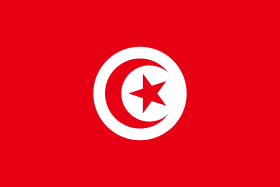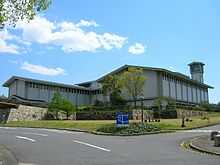Seto, Aichi
| Seto 瀬戸市 | |||
|---|---|---|---|
| City | |||
|
Jōkōji | |||
| |||
 Location of Seto in Aichi Prefecture | |||
 Seto
| |||
| Coordinates: 35°13′N 137°05′E / 35.217°N 137.083°ECoordinates: 35°13′N 137°05′E / 35.217°N 137.083°E | |||
| Country | Japan | ||
| Region | Chūbu (Tōkai) | ||
| Prefecture | Aichi Prefecture | ||
| Government | |||
| • -Mayor | Kinya Masuoka | ||
| Area | |||
| • Total | 111.61 km2 (43.09 sq mi) | ||
| Population (February 2012) | |||
| • Total | 131,714 | ||
| • Density | 1,180/km2 (3,100/sq mi) | ||
| Time zone | Japan Standard Time (UTC+9) | ||
| - Tree | Ilex rotunda | ||
| - Flower | Camellia | ||
| Phone number | 0561-82-7111 | ||
| Address | 64-1 Oiwake-chō, Seto-shi, Aichi-ken 489-8701 | ||
| Website |
www | ||

Seto (瀬戸市 Seto-shi) is a city located in Aichi Prefecture, Japan.
As of 2012, the city has an estimated population of 131,714 and a population density of 1,180 persons per km². The total area is 111.61 km². It is located about 35 minutes from Nagoya by way of the Meitetsu Seto Line.
Geography
Seto is located in the hilly northern region of Aichi Prefecture, bordering Gifu Prefecture. In English, the name of Seto translate to "the place where the river runs quickly." However, while there is a river in Seto, it is not significantly large, nor quick-moving. Seto City is famous for its pottery and ceramics, so much so that the generic word for ceramics in Japanese is setomono (瀬戸物 setomono). The main street along the river is lined with dozens of pottery shops. Every 3rd Saturday and Sunday in September, there is a very large pottery festival called Setomono Matsuri (瀬戸物祭り) This festival attracts about 20,000 visitors from around Japan and abroad every year.
Surrounding municipalities
Aichi Prefecture
Gifu Prefecture
History
During the Edo period, the area of modern Seto was controlled by the Owari Tokugawa of Nagoya. The area had been famous for its ceramics production since at least the Kamakura period. During the Meiji period, Seto village was organized in 1888, becoming a town in 1892. After annexing the neighboring village of Akatsu in 1925, Seto was raised to city status on October 1, 1929. Much of the city was destroyed in 1945 during World War II.
In the postwar period, the city grew as a bedroom community for Nagoya and as a tourist designation. On March 25, 2005, Expo 2005 opened with its main site being in Nagakute and additional activity in Seto. The expo continued until September 25, 2005.
Transportation
Railways
- Aichi Loop Railway – Aichi Loop Line
- Yamaguchi - Setoguchi – Setoshi - Nakamizuno
- Meitetsu – Seto Line
Highways
Education
- Nanzan University – Seto campus
- Nagoya Gakuin University – Seto campus
- Nagoya Seirei Junior College
Sister city relations
 - Jingdezhen, China, since 1996
- Jingdezhen, China, since 1996 – Limoges, France
– Limoges, France – Nabeul, Tunisia
– Nabeul, Tunisia
Local attractions

Noted people from Seto
- Sayaka Aoki – comedian
- Junji Suzuki – politician
- Asaka Seto – actress
- Manpei Takagi – actor
- Toru Hasegawa – professional soccer player
- Hayata Ito – professional baseball player
External links
| Wikimedia Commons has media related to Seto, Aichi. |
- Seto City official website (Japanese)
- Seto City official website (English)
| ||||||||||||||||||||||||||||||||||||||||
